
13 Sep
The major focus of rehab-oriented TV shows is demo…we can’t get enough! We sit there with our coffee, our magazine, and our tablets (because we live in an over-sensory world) while we watch homeowners, investors, and contractors throw those hammers! They have masks, they have closed-toed shoes, they have…polos?
The scene typically lasts 2-3 minutes. Commercial break, back to the tablet to do work or find that video of dogs who can’t manage staircases.
This is a far cry from what it actually takes to do demolition.
You need tools: sawzalls (reciprocating saw), crow bars, wrecking bars, sledge hammers, standard hammers, chisels, floor scrapers, and nail pullers (which are sometimes a combination of the aforementioned tools).
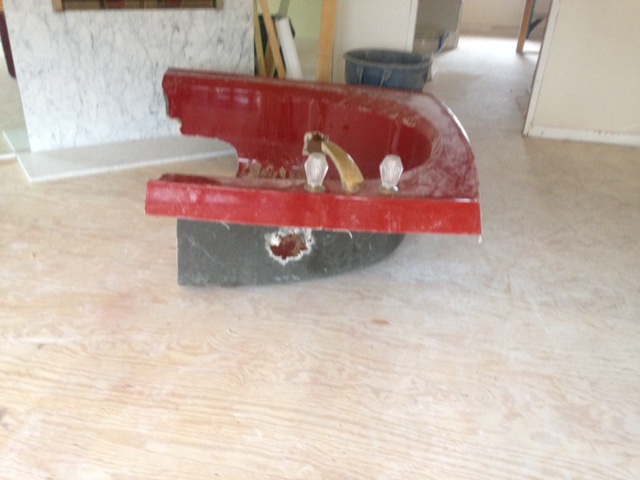
You need protection: gloves, masks…demolishing plaster? ventilating masks!, goggles, and knee pads. You also need to prepare for this. Disconnect all the plumbing, the electrical, the HVAC or radiators. Then, you need to install temporary electrical (we still need to plug in our tools!) and temporary plumbing (we need a toilet!). You need wayfinding (signs that show where the electrical and plumbing are!). You need plywood and plastic to cover any areas of heavy traffic that are being saved (such as a rear patio, front driveway, or built-ins/doors/millwork.)
You need people: I have yet to see a woman doing demo - I won’t pretend that I participate at all. I watch large, burly men do incredible feats…I am always stunned at how much power these guys wield. For a typical free-standing building, we have 4 guys throwing hammers and 2 guys hauling it out of the building and into our dump trucks.
You need tenacity: Demo is tough. All of the senses are assaulted - it’s loud, it’s dirty, it’s hard to breathe, it’s dangerous to touch, and it makes you thirsty. This is only day one, now add on another 15-30 days. Every day is the same….BANG! PULL! DRAG! CUT! HAUL! WATER! Then, at the end of each day, we organize and sweep - it seems so counter-intuitive to clean a demo site. The fact is that it gets out of hand very quickly if order isn’t kept. The Demo phase of construction has the largest opportunity for big mistakes and cleaning gives us another layer of attention to detail to help mitigate liability - on our very first project, the first wall that came down was the wrong one.
Let’s also not forget the actual removal of debris. We throw our debris into dump trucks and haul them off site every day. Another option is to use a dumpster - have fun clearing the parking spots, not damaging your driveway, or not having your neighbors throw their own large-scale garbage into your dumpster. There’s something about dumpsters, they bring out the worst in people. It must be yet another side-effect of global warming.
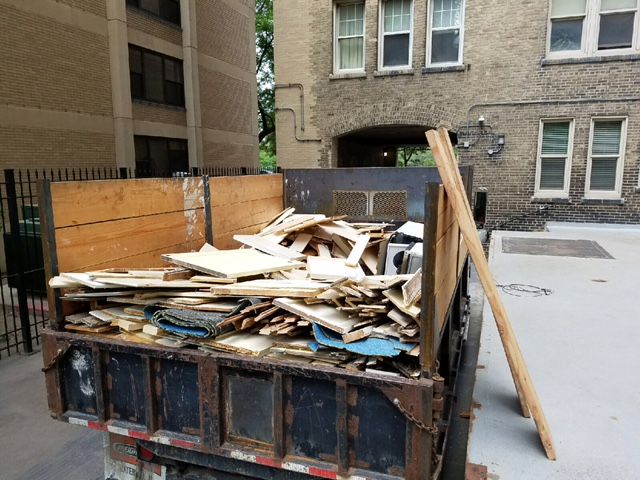
Live in a high rise? CONGRATULATIONS! You have more complexity! In addition to the above, you now have to cut down every piece of debris to fit it into carts and garbage cans, wait for the elevator, get into the elevator, get out of the elevator, and open heavy fire doors to get to some sort of loading dock or alleyway, then empty it all into your dumpster or truck without getting dust all over other things in that dock or alleyway (like cars). Let’s not forget the prep! Drop cloths down in every common building area, sweeping the common areas, mopping the common areas, hosing down the dock area or alleyway, wiping down the elevator cab and doors. Not to mention that you have to actually reserve the elevator with building management - they really love it when you need the elevators for weeks on end.
So, to recap, 6-8 guys, a site manager, 3-4 weeks full time, and 3-12 dumpsters/dump trucks. Yeah, demo is expensive.
This brings us to the Hyde Park Condo - O.M.G. On the 23rd floor of the high rise, in an old elevator, for a condo with concrete columns (don’t touch!), concrete ceilings (don’t touch!), concrete floors (don’t touch!), and plaster walls. On the first day of demo, we learned that the walls were brick…yep, you read that right. This means that there is a high potential of the entire wall coming down with a few blows because the clay brick will crumble. Did I mention we’re saving the original plaster crown moulding? So, how do we ensure that if the brick crumbles, it doesn’t take the crown moulding down with it? We frame it out! Of course! No problem!
So, now, instead of hauling plaster and lathe, we’re also hauling stone with every load. As we’re demolishing, we’re also communicating with the architect about our findings - not to worry, Andy has rocked it out. He has a custom workstation and detailed drawings:
Yes, that IS part of a shelving system that we demolished!…Why, yes! That IS a bathtub with a salvaged door on top!
Every day, Andy communicated with the building engineer and building manager about progress. He posted wayfinding, protected EVERYTHING, and managed time…particularly in a high rise, with all of the preparation needed just to get the debris into the elevator, time is of the essence. We can’t reserve the elevator every day because 1) the building won’t allow it and 2) we’re not ready. We’d need 1-2 days for demo and debris organizing and then 1-2 days for hauling. Also, we only had the elevator for 3 hours at a time. Luckily for us, the building was incredibly nice to us and did give us a couple extra hours here and there. They also had no visible irritation at our massive undertaking which required constant use of their elevator. It’s not always like this, folks. The building team in Hyde Park was fantastic.
Okay, enough with the lecture, you’re here for the photos right? Well, here you go!
Those footprints in the concrete are from 1928!
BEFORE & AFTER:
..and that’s a rap! Now it’s time to put it all back together.
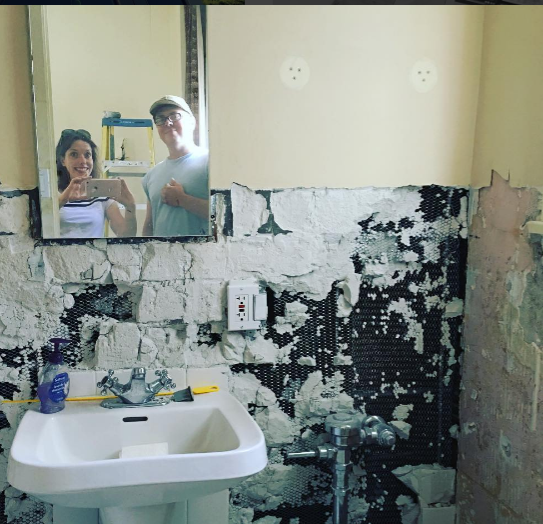
Want to see more projects? Check us out at Integro Rehab!








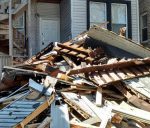






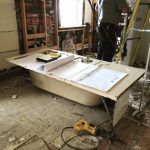
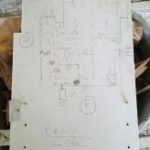
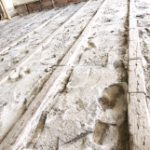
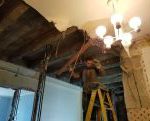




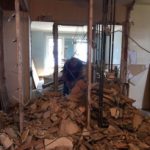









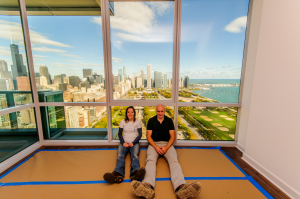
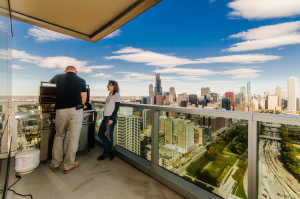

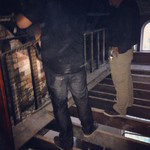



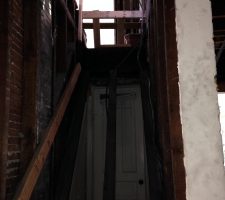
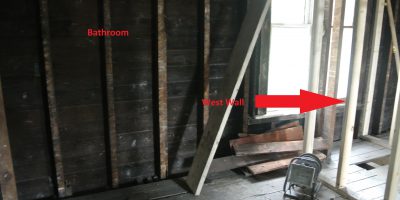
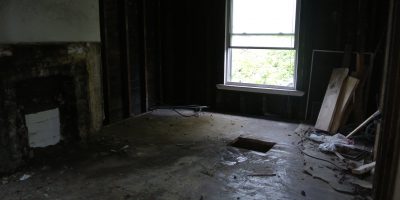


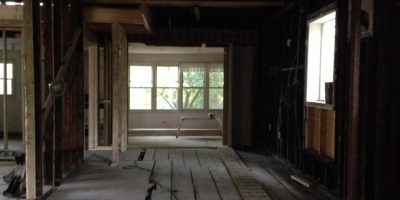
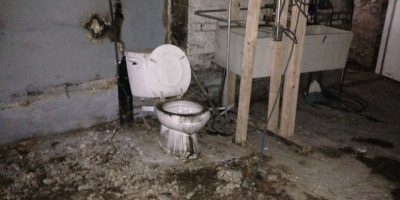
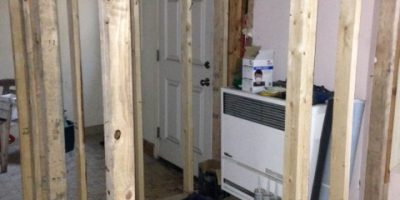
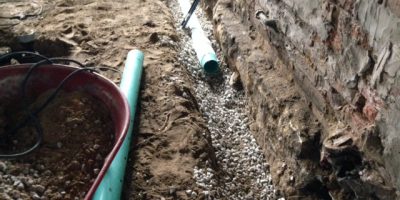



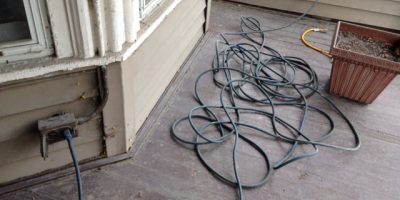
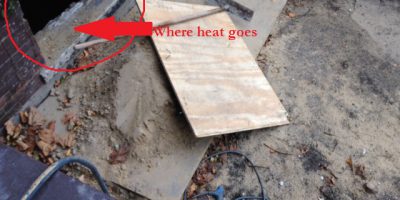


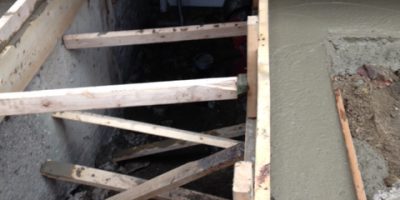
No Comments